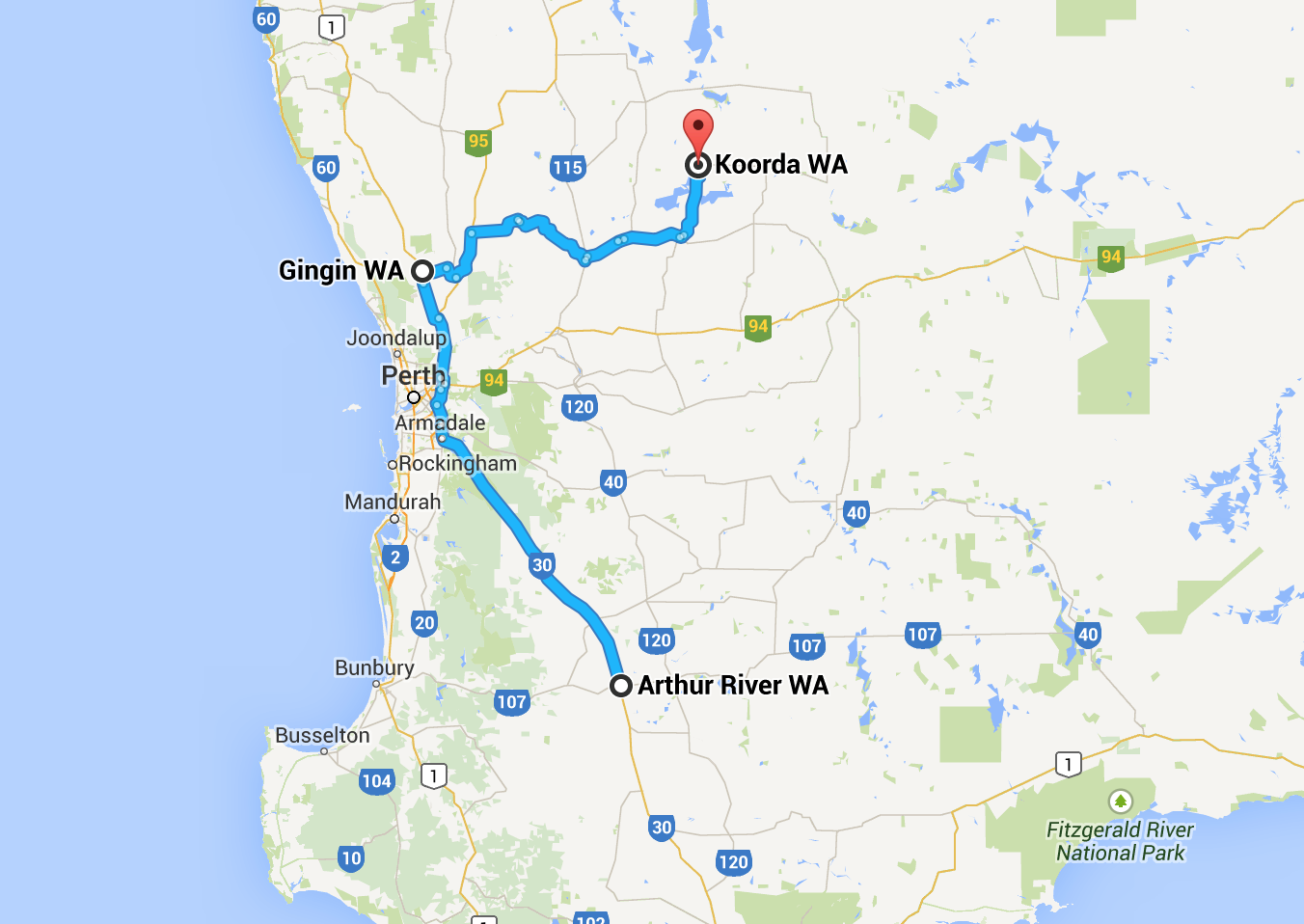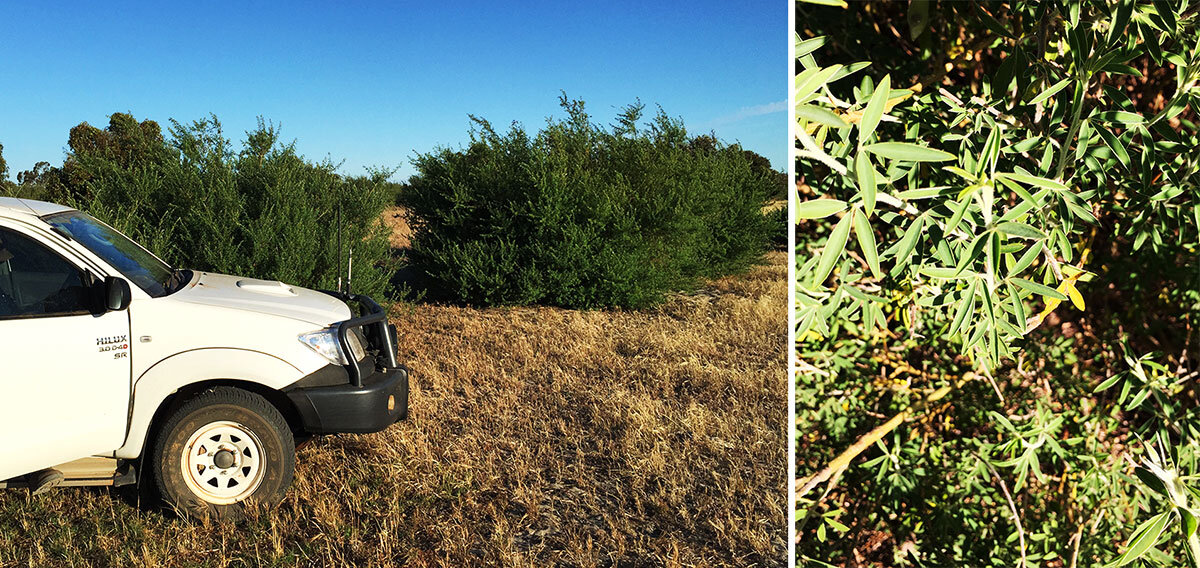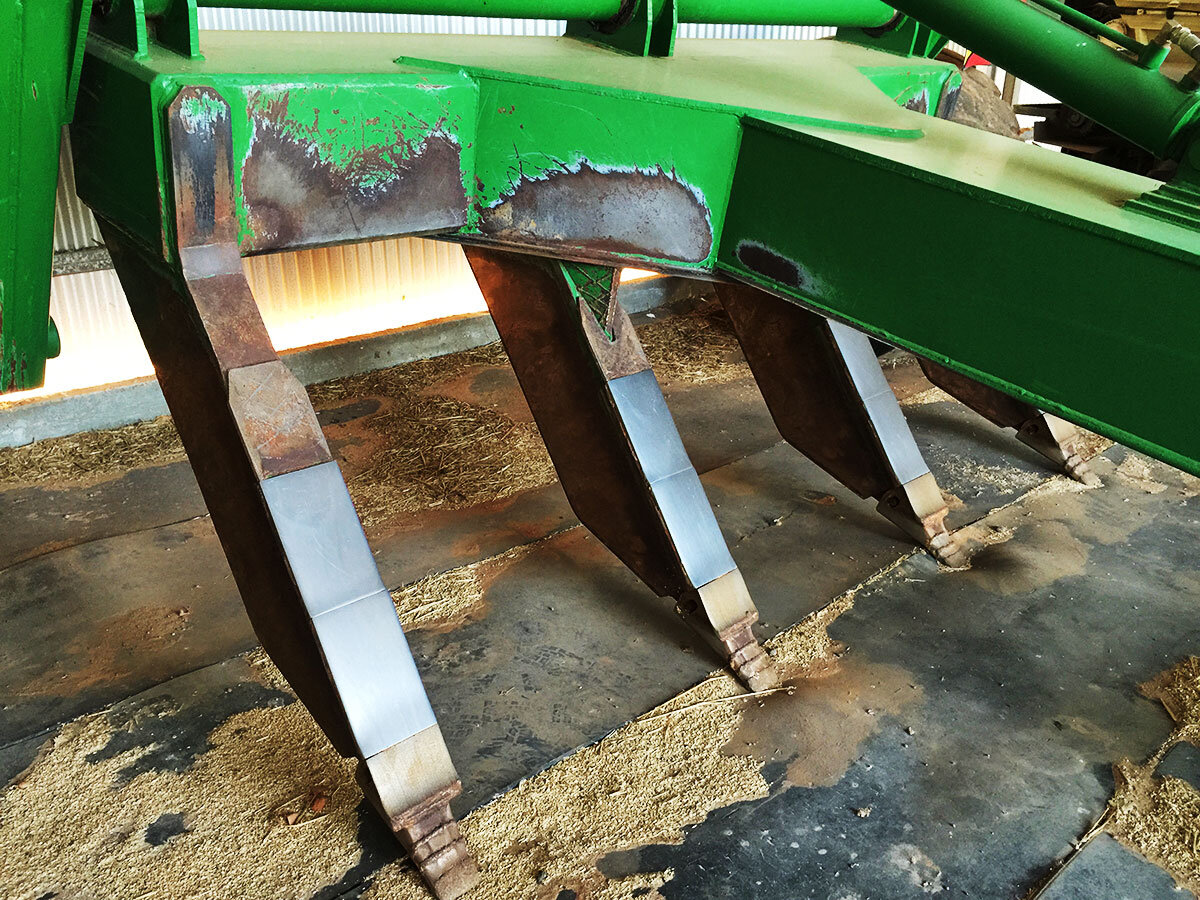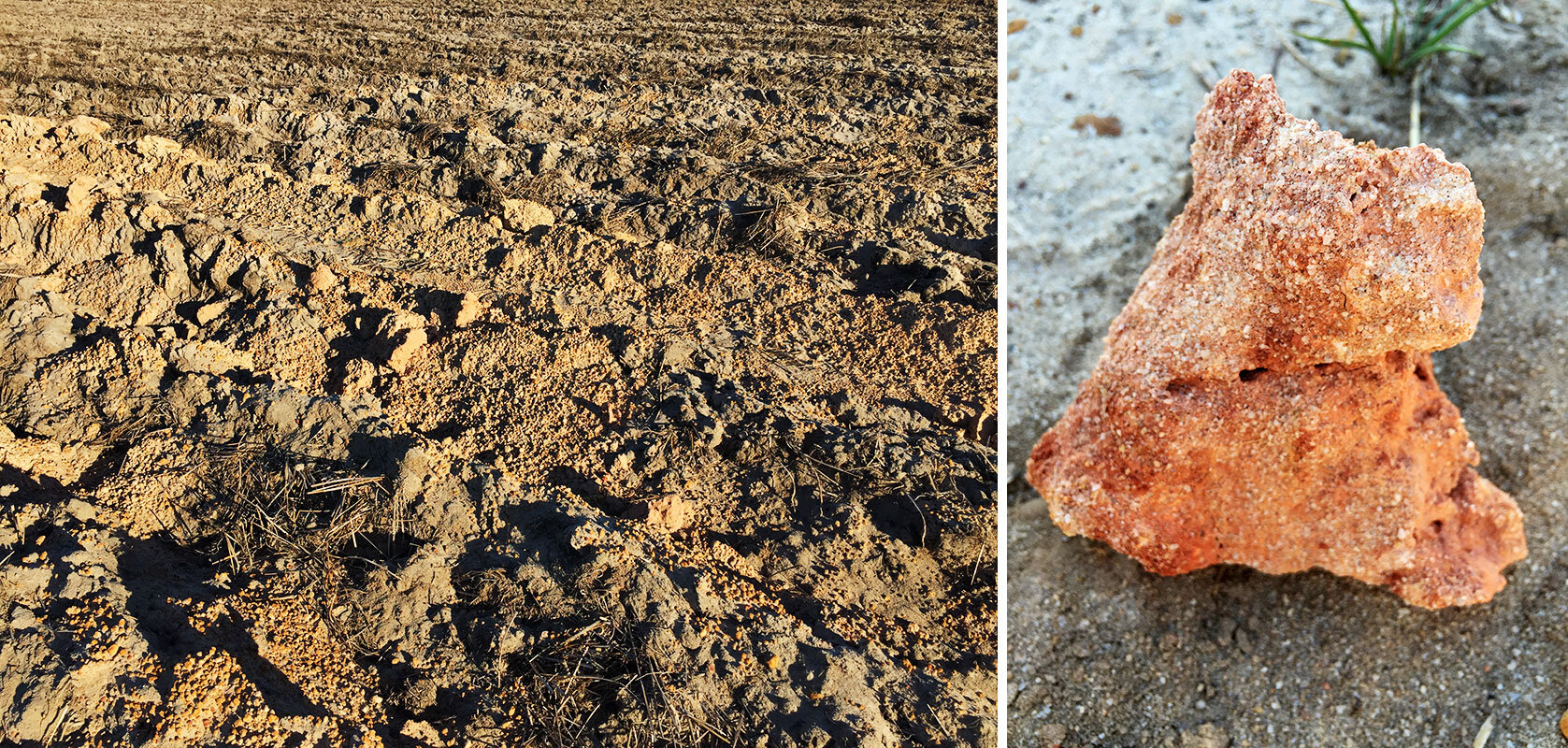Day 55 - Worm juice & Claying
 I spent the night near Gingin, but I'll come back to that in tomorrow's blog. A bit of last minute planning was called on to arrange a visit to Diane Haggerty, who farms with her husband Ian on the more marginal land on the eastern side of the wheat belt. They have an interesting story, having run a petrol station for the first part of their marriage, before buying 660ha of run down farmland next to Diane's parents' farm. They put all of their money in to the land, and had none left over for machinery. Luckily being next to Dad has its benefits, so they could borrow a drill and tractor. This was in 1994, and luckily two good years followed, which allowed them to make some money. In the early 2000s they took on their first bit of rented land, and promptly had a total crop failure - but they scraped through.Since then they have managed to buy a little bit more land, but mainly the business has grown by renting degraded land that other farmers don't even bid for. The problem here is that the leases are short term, and once they have reversed the decline in productivity, the landlords then want more money and the neighbours come in with bigger bids. Currently they farm 9,300ha, but that changes year on year.
I spent the night near Gingin, but I'll come back to that in tomorrow's blog. A bit of last minute planning was called on to arrange a visit to Diane Haggerty, who farms with her husband Ian on the more marginal land on the eastern side of the wheat belt. They have an interesting story, having run a petrol station for the first part of their marriage, before buying 660ha of run down farmland next to Diane's parents' farm. They put all of their money in to the land, and had none left over for machinery. Luckily being next to Dad has its benefits, so they could borrow a drill and tractor. This was in 1994, and luckily two good years followed, which allowed them to make some money. In the early 2000s they took on their first bit of rented land, and promptly had a total crop failure - but they scraped through.Since then they have managed to buy a little bit more land, but mainly the business has grown by renting degraded land that other farmers don't even bid for. The problem here is that the leases are short term, and once they have reversed the decline in productivity, the landlords then want more money and the neighbours come in with bigger bids. Currently they farm 9,300ha, but that changes year on year. Like I said at the beginning, this is really marginal land, where 2t/ha is considered a big harvest and the annual rainfall is 100mm. The name of the game is to keep down costs and reduce risk. To achieve this, Diane & Ian have focused heavily on soil health, and nutrient cycling. It is too expensive to ship in quality compost, which costs A$200 before shipping, so they use compost extract, and also worm juice. Worm juice, delicious as it may sound, is actually what seeps out the bottom of compost heaps at special worm factories. I can't help but think it sounds like a kid's version of Snake Oil! These two liquids are applied at 5l/ha, normally at drilling, but the worm juice can also be sprayed on to the plant directly as a foliar application. In addition to these potions, they use some herbicide, but no insecticides or fungicides. Conventional fertilisers are placed at drilling, but in such small amounts I'm amazed they bother: 1kg/ha of phosphate and between 2-10kg/ha of nitrogen. Leaf tissue testing tells them when trace elements are needed, and they are put on as foliar sprays. Needless to say, the sheep operation uses long rest rotational grazing.So what are the results? Wheat yields are less than conventional in a good year, but the same in drier ones. Quality though is much improved, with top level proteins being produced all the time. The same is true of the sheep flock, as they have increased lambing percentages to somewhere between 90-150% depending on the season, and the wool quality (these are Merinos) normally reaching the second highest grade, AAAM. It's also worth noting that they don't have to de-worm the sheep, which is very unusual.Diane says her crops stay green a lot longer than the neighbours, and showed me some photos that were fairly emphatic. Unfortunately it's the wrong time of year for me to see with my own eyes. SOM levels are 40-50% higher than the neighbours (at the home farm), but this must be considered whilst remembering how unreliable these tests can be.I've got a lot of respect for how far these two have come from starting with very little. I certainly wouldn't have wanted, or probably been able to, do what they have. I am noticing a trend with these sort of out-there systems though. More of that in the final Australia blog.
Like I said at the beginning, this is really marginal land, where 2t/ha is considered a big harvest and the annual rainfall is 100mm. The name of the game is to keep down costs and reduce risk. To achieve this, Diane & Ian have focused heavily on soil health, and nutrient cycling. It is too expensive to ship in quality compost, which costs A$200 before shipping, so they use compost extract, and also worm juice. Worm juice, delicious as it may sound, is actually what seeps out the bottom of compost heaps at special worm factories. I can't help but think it sounds like a kid's version of Snake Oil! These two liquids are applied at 5l/ha, normally at drilling, but the worm juice can also be sprayed on to the plant directly as a foliar application. In addition to these potions, they use some herbicide, but no insecticides or fungicides. Conventional fertilisers are placed at drilling, but in such small amounts I'm amazed they bother: 1kg/ha of phosphate and between 2-10kg/ha of nitrogen. Leaf tissue testing tells them when trace elements are needed, and they are put on as foliar sprays. Needless to say, the sheep operation uses long rest rotational grazing.So what are the results? Wheat yields are less than conventional in a good year, but the same in drier ones. Quality though is much improved, with top level proteins being produced all the time. The same is true of the sheep flock, as they have increased lambing percentages to somewhere between 90-150% depending on the season, and the wool quality (these are Merinos) normally reaching the second highest grade, AAAM. It's also worth noting that they don't have to de-worm the sheep, which is very unusual.Diane says her crops stay green a lot longer than the neighbours, and showed me some photos that were fairly emphatic. Unfortunately it's the wrong time of year for me to see with my own eyes. SOM levels are 40-50% higher than the neighbours (at the home farm), but this must be considered whilst remembering how unreliable these tests can be.I've got a lot of respect for how far these two have come from starting with very little. I certainly wouldn't have wanted, or probably been able to, do what they have. I am noticing a trend with these sort of out-there systems though. More of that in the final Australia blog. After leaving Diane I went to see someone at the other end of the spectrum. Trevor Syme runs 60 cows, which he feeds on Tagasaste (see above), but is really a specialist arable farmer. Although he farms only about 60km west of the Haggertys, there is much more rain so wheat yields can reach over 4t/ha.
After leaving Diane I went to see someone at the other end of the spectrum. Trevor Syme runs 60 cows, which he feeds on Tagasaste (see above), but is really a specialist arable farmer. Although he farms only about 60km west of the Haggertys, there is much more rain so wheat yields can reach over 4t/ha. It's still an unfriendly place to farm though, as the top soil is non-wetting sand, which means it is coated in a waxy substance which makes water either sit on the top as a puddle, or just soak through incredibly quickly. His solution is to bring up some of the subsoil clay and mix it in with the sand. There are three ways to do this,
It's still an unfriendly place to farm though, as the top soil is non-wetting sand, which means it is coated in a waxy substance which makes water either sit on the top as a puddle, or just soak through incredibly quickly. His solution is to bring up some of the subsoil clay and mix it in with the sand. There are three ways to do this,
- Mouldboard ploughing - doesn't work too well on these soils as the clay depth is too variable.
- Delving & spading - a huge set of legs are pulled very deep through the soil (see photo above), which brings up the clay, and mixes it through the soil profile. After this a spader is used, which is a bit like putting it in a cement mixer.
- "Claying" - here several pits are dug in the field, and clay is mined out of them. It is then spread out over the rest of the field at a rate of...250t/ha (not a typo). A set of discs are then used to mix the clay into the top 10". This costs almost A$1,000/ha in total.
Obviously none of these are what you might call low disturbance, but the payoff can be big. Delving and spading can give a 1t/ha increase in wheat yield, and Claying up to 1.6t/ha. It only takes 3 years or so to pay back, and should last for at least 10. Trevor is unusual in that he grows lupins as a full season cover crop - i.e. he plants in the autumn and then sprays them off before reaching maturity. He doesn't use sheep or cattle to graze the plants as I expected, but he just leaves them until the next autumn and sows directly into it with his NDF disc drill. The reason he does this is mainly for weed control (the dreaded ryegrass), but it also allows him to grow a fertiliser-free wheat crop afterwards.Two farms and two very different philosophies. Which is better? Who knows?
Trevor is unusual in that he grows lupins as a full season cover crop - i.e. he plants in the autumn and then sprays them off before reaching maturity. He doesn't use sheep or cattle to graze the plants as I expected, but he just leaves them until the next autumn and sows directly into it with his NDF disc drill. The reason he does this is mainly for weed control (the dreaded ryegrass), but it also allows him to grow a fertiliser-free wheat crop afterwards.Two farms and two very different philosophies. Which is better? Who knows?
